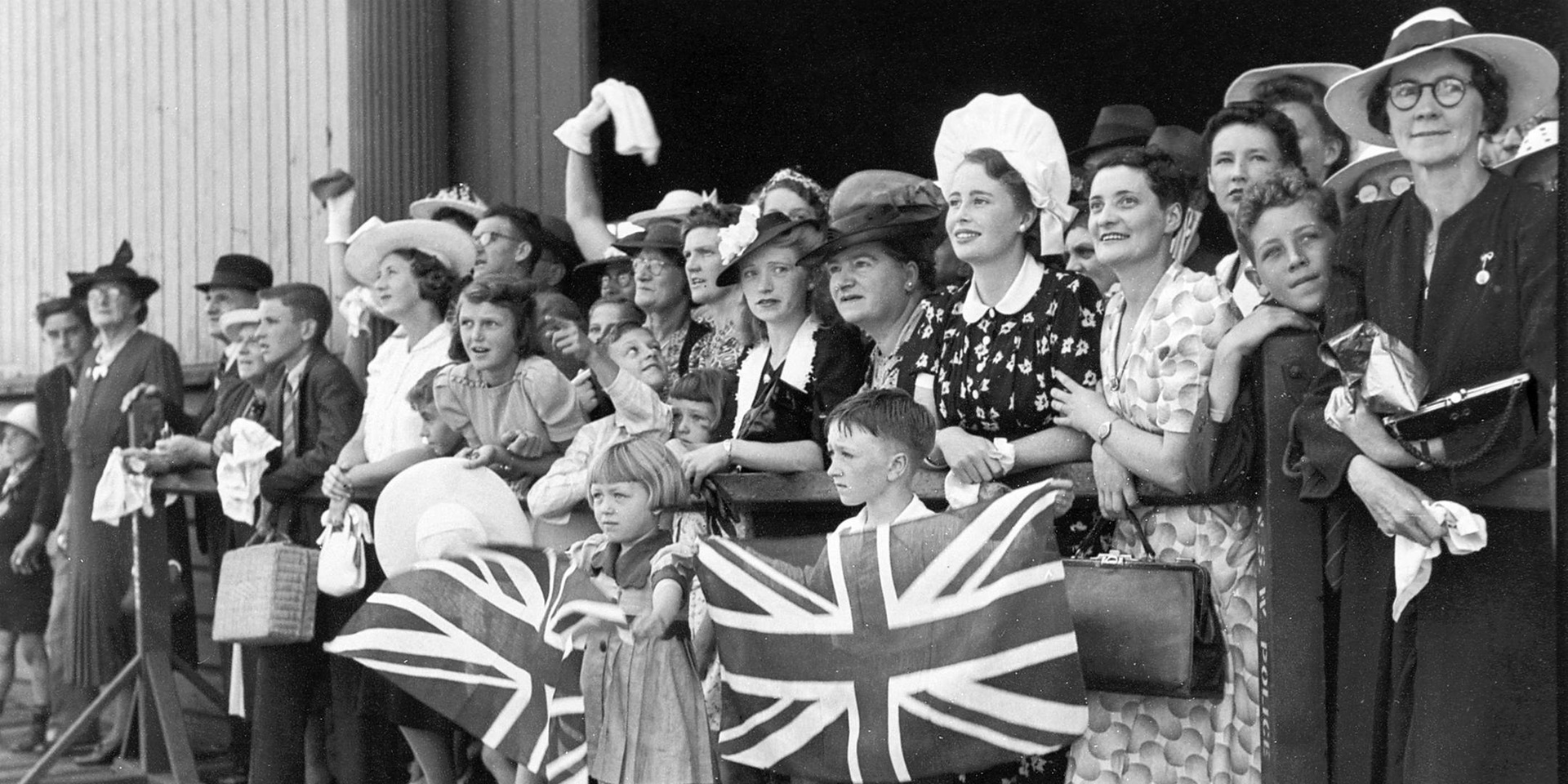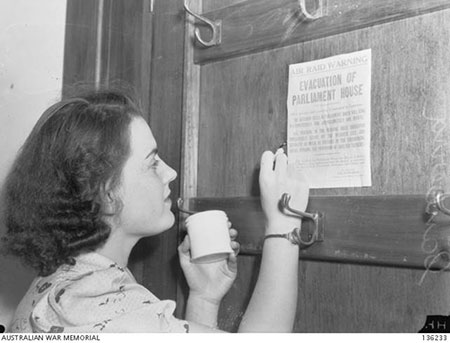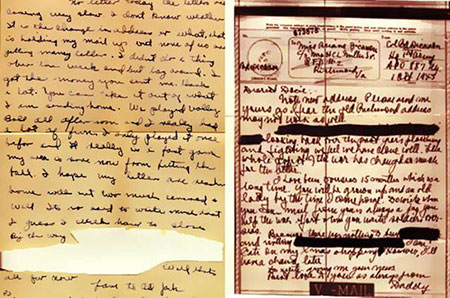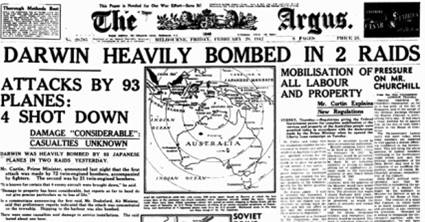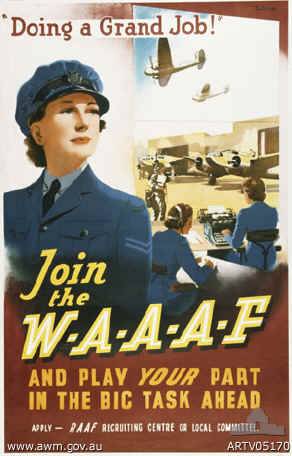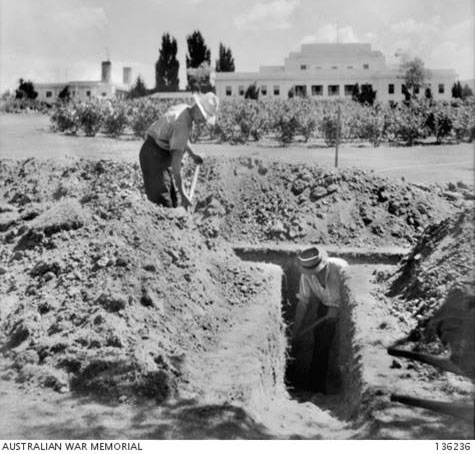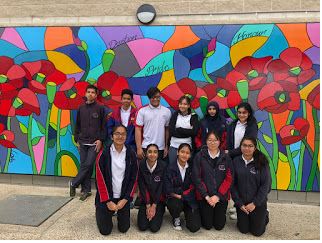Amaroo School - Canberra, Australia.
12 students from Year 9 (ages 14-15) at Amaroo School in Australia's capital city, Canberra, have undertaken this project based on life at the home front during the second world war.
"We did the project mainly because we all had an interest in Australia during World War Two. More specifically Canberra and what the people living in Canberra experienced during this time."
Canberra Struggles – Facing an uncertain future
Communication objective
The main interest of this project was to produce a product that can be important and informative for future generations about Canberra.
Our research
We did the project mainly because we all had an interest in Australia during WWII and, more specifically, Canberra and what people living in Canberra experienced during the time.
We looked at political, social, historical and personal aspects of the Homefront in WWII.
Before the War Began
Before World WWII, Canberra was a small town, with only 11,400 people, according to the census which was taken in June 1918. One of the reasons Canberra held significance during this time was because of the Federal Government being stationed there. Events that occurred before WWII in Canberra include the Great Depression, not only impacting Canberra but the whole nation.
Aftermath – a new start
The War Memorial had primarily been built to exhibit Australia’s involvement and significance in WWI, but the Memorial was still incomplete by the beginnings of WWII. In 1941 the Government extended the Memorial’s Charter to include WWII.
WWII had a huge impact on everyone. Over 993,000 Australians served in WWII, out of those 23,477 were killed either in action or died later. The lives of fellow Australians were especially impacted because of the efforts being made by the Homefront to produce war materials was as important as the battles being fought overseas. Australia was physically affected by the war due to the certain events such as the Darwin bombing in 1942 and the submarine attack on Sydney Harbour by submarines belonging to the Imperial Japanese Navy. After WWII, the Australian population flourished, with a population over 7 million - 90% Australian born, and Canberra’s population started rising above 15,000 by 1946.
Political parties
Robert Menzies was the Prime Minister of Australia when the war started. He had broadcast to inform Australia that Britain had declared war on Germany. This meant that Australia had also entered war, along with Britain. In the months prior to the war, the economic conditions had become worse in New South Wales. The government focussed on the war effort and had put many state programs on hold, but opposition leader William McKell argued with the fact that the war was “primarily a Federal responsibility” and that State services should be maintained. During the elections in May, 1941, the UAP vote had collapsed and the Labor Party returned to office with a strong majority.
By 1942, our nation was facing an unprecedented war emergency. The Commonwealth government began assuming far greater powers, including the vital power of collecting income tax, formerly collected by the States. During the war years, more than 130 members and future members of the Parliament of New South Wales served in the Australian military forces. Some remained as serving members whilst in the military forces.
The Bunker
The bunker is a small brick building housing an electricity substation and a bicycle garage. It might look of very little importance to a passer-by, but during WWll, the Bunker, as it was known, housed the Prime Minister’s cables department. "It was a highly sensitive and highly secret place" said historian Peter Dowling. The bunker was the official link from the Prime Minister's Office, in other words Australia, to Britain and to the rest of the world. The building is tucked away behind West Block and had such importance that it included a walkway straight to the Prime Minister's Department. This had been set aside from the main building because access and knowledge of the cables and messages going through were highly restricted (Dr Dowling).
Censorship and Correspondence
The position Australia had in terms of propaganda on the Homefront in WWII was interesting because it was one of the few nations that had a voluntary system for enlisting during all of the conflict. Because of this, the information that was released about the war was usually censored in order to:
● promote enthusiasm about the war
● convince others to enlist
● hide information to enemy countries and information that would worry Australians (such as high death tolls).
Censors were also used to examine media such as books, films, news, and letters, and it was then determined if any of the information should be removed (classified as information which was unsuitable or dangerous when regarding moral, military or political reasons).
Women at Wartime
The role of Australian women in the service and on the Homefront expanded exceedingly in WWII. Women were no longer confined to do specific activities such as nursing, medical and voluntary roles, and they were able to volunteer for a women's army in each of the services.
On the Homefront, as men left jobs to go to war, the number of women being employed enlarged rapidly, and various new professions opened to women. Even though women started to become frequently involved, they were still treated unequally, for instance women received approximately 54% wage in comparison to what males had received for their approximate wage.
Women's Australian Auxiliary Air Force (WAAAF) was formed in February 1941 to replace men wireless telegraphy operators for release for service overseas. Numerous members of the WAAAF were occupied in skilled technical work such as signals, communication, and mechanics, although some even worked in traditional female roles like cooks and stewardesses.
The Australian’s women's army service (AWAS) was formed on 13 August 1941 when the war cabinet granted approval in principle, although, it was not until October 1941 that the AWAS became operational. AWAS was formed “to free men from specific military duties for employment in fighting units”. The members had to be between 18-45 years and single. Widows that had dependent children were also allowed to enlist. The members served as mechanics, cooks, drivers, typists, tele-communications officers and a dozen other occupations. The AWAS was one of the only non-medical women’s services to send a workforce overseas during the war, while approximately 350 women were posted to Lae, Rabaul and Hollandia near the end of war.
Australian Women's Land Army (AWLA) was established on 27 July 1942, in which they replaced male farm workers that had to either enlist in the armed services or who were working in other essential/compulsory jobs. Members enrolled for full 12 months or the duration . The highest number of enrolment was in December 1943 with 2382 permanent members and 1039 auxiliary members.
Education
The students at Canberra high still followed everyday life as it was like a normal day. The classes that they attended are close to the classes and teams that are available today. Some of these classes were woodwork, swim teams, tennis teams and more. During this time they had prefects and a celebration war in 1939. As the threat of the war was coming large in 1941 the school took some precautions. The following year they dug out slit trenches and camouflaged air raid shelters were built near the school building.
Living and working conditions
During war, life for Canberrans was harsh. People were expected to work harder and avoid luxuries and waste. All Australians, worked hard and pulled together in a sense of unity. Civilians, as well as the troops, needed a sufficient amount of food to survive. Therefore, more workers were needed to cope with the huge demands placed on both agricultural producers and manufacturers. Canberra had to deal with periods of shortages. Rationing regulations were gazetted in May 1942.
Rationing was enforced by the use of coupons and was limited to clothing, tea, sugar, butter, and meat. From time to time, eggs and milk were also rationed under a system of priority for vulnerable groups during periods of shortage.
Australia had experienced attacks on its own land for the first time and the people faced fear and uncertainty. The government implemented a wide range of measures in preparation for the situation of “total war” and national security. The urgent need was to increase available manpower in all areas.
Health
The mental and physical health of Australians during WWII was impacted in different ways. Those who lived back home, and the people who were fighting on the front lines, were faced with different diseases and illnesses. Life was also hard for those at home, and the family or friends of those fighting overseas.
Some men had also developed mental illnesses, the most common being “shell shock”, or as we call it today, PTSD (post-traumatic stress disorder). The stress and tension of being in such a dangerous environment took its toll on them, and while the effects of PTSD were thought to be temporary by doctors, it was found out in later studies that new symptoms might develop with age, and that the illness could last a lifetime. The families of these men had to watch their family members’ lives drastically change, and most saw, and were impacted themselves, by the things they could no longer do normally.
Group Statement
The students undertaking this project are 12 students aged 14-15 year, in Year 9. Since we’ve been given an opportunity to research information about Canberra during WWII, we will be able to catch an insight on a topic we never thought of pondering on before.
